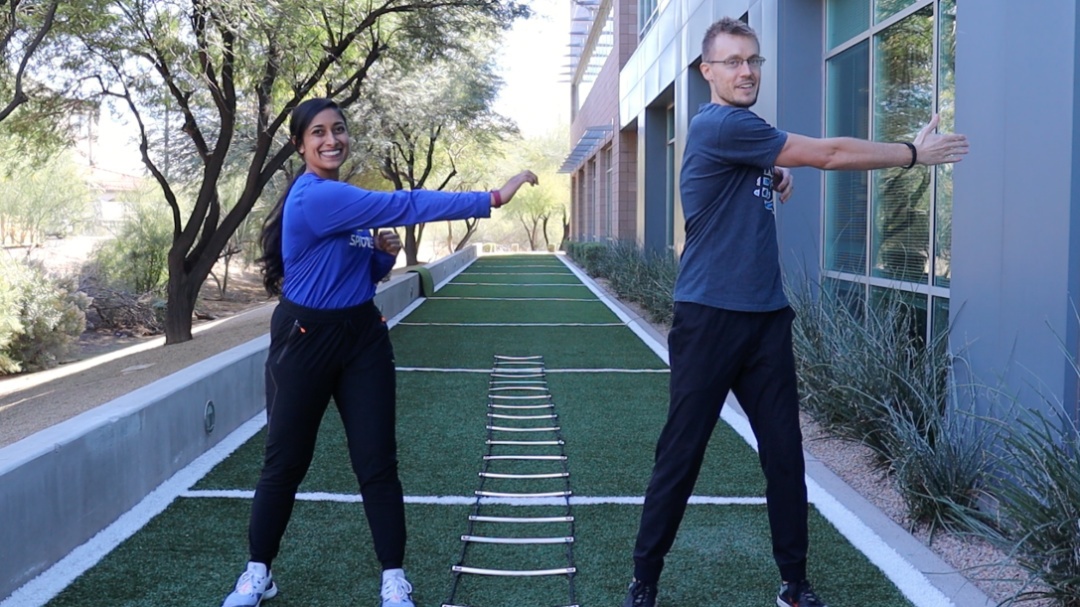By: Annoushka Ranaraja, PT, DPT and Devin Miller, FMS, FIT Trainer
The brain is the center of human function. It controls every function and process you can think of – both consciously and automatically. It’s intricately involved in everything, and we want to keep our brains as healthy as possible for the duration of our lives.
Neuroplasticity is the ability of the brain to grow or reorganize in response to a stimulus. This process of rewiring can be promoted or supported by a protein called brain-derived neurotrophic factor (BDNF). BDNF is a gene that produces a protein of the same name that is critical for the health of the central and peripheral nervous systems. It helps build stronger connections for electrical and chemical synapses- those messages your brain sends throughout your body. Along with stronger synapses, BDNF, while strengthening the neurons of the brain, helps create new pathways for synapses to occur. This happens when you learn a new task or skill, and it opens up new ways to tap into the strength and power of your brain. In doing this, memory, movement, and coordination can improve. Also, a benefit of this increase is a possible decrease in the progression of neurological diseases such as Parkinson’s or improved function secondary to a stroke, brain injury, or spinal cord injury.
How Can I Improve My Neuroplasticity?
High-Intensity Interval Training (HIIT) has been proven to increase BDNF in the brain. If your goal is to implement high amplitude, powerful movements to combat rigidity in people with movement disorders or to improve coordination, strength, and cognition in others with neurological disorders or injuries, HIIT may be a good treatment method. Utilizing HIIT workouts is not only fun but is also extremely beneficial for these patient populations. A great way to incorporate these exercises into treatment is boxing!
Boxing is a great exercise in general or for someone with a neurological condition or injury. It can be worked into treatment to improve coordination, strength, power, endurance, balance, and overall cognition. Whether you are throwing a jab, cross, uppercut, or hook or slipping, sliding, or rolling, you need to coordinate the movement both with upper and lower extremities. You can work on cognition with boxing by calling out the sequence to which punch you want a patient to throw or which foot you want them to lead with. Additionally, this can help improve reactive and anticipatory balance. The punches also add a perturbation to a staggered stance. Although to increase BDNF, it has been proven that you want to work at high intensity for shorter bouts. It can be beneficial to a patient to work boxing into their treatment plan for endurance that may challenge their strength and cardiovascular system. So, when looking at the boxing workout below, incorporate the complete workout to build endurance or modify by breaking it into shorter segments to increase BDNF. Both are great options to help your patients move and feel better!
How Can I Get Started Boxing?
In boxing, there are many things that need to be remembered and practiced. It is not just swinging your arms around hitting a bag. It involves learning punch combinations, footwork, hip and core work, high and low blocks, and more. All of these require a close connection between the mental and physical state of our bodies. Boxing well means moving well! Learn how to box well and watch your movement follow suit.
So, get up, get moving, and let’s start boxing together!
Warmup: 7-8 minutes
- Jump Rope (5 minutes)
- Cross Body Reaches with Neutral Head (1 minute)
- Cross Body Reaches with Hips and Head Following (1 minute)
Workout: 45-50 minutes
- Dead Bug (2 x 15 reps alternating each side)
- Bird Dog (2 x 15 reps alternating each side)
- Staggered Stance Cable Double Arm Pushouts (2 x 15 reps each side)
- Ladder Forward Moving Two Feet In (2 x 1 minute)
- Ladder Quick Feet with Lateral Single Foot Tap (2 x 1 minute)
- Shadowboxing Jabs (1’s and 2’s) (5 minutes with recovery periods interspersed when needed)
- Slips (2 x 15 reps each side)
- Rolls (2 x 15 reps each side)
- Forward and Reverse Slides (5 minutes with recovery periods interspersed when needed)
- Freestyle: Combo of Jabs, Slips, Rolls, and Slides (10 minutes with recovery periods interspersed when needed)
Cool Down: 5 minutes
- Treadmill or Outdoor Walking with Diaphragmatic Breathing
Learn more about Neurological Rehabilitation at Spooner. Whether you’re looking to increase neuroplasticity or you just want a great workout to introduce yourself to boxing, our Spooner therapists and FIT trainers are here to help! Schedule an appointment today!
References:
- Jiménez-Maldonado, A., Rentería, I., García-Suárez, P. C., Moncada-Jiménez, J., & Freire-Royes, L. F. (2018). The Impact of High-Intensity Interval Training on Brain Derived Neurotrophic Factor in Brain: A Mini-Review. Frontiers in neuroscience, 12, 839. https://doi.org/10.3389/fnins.2018.00839

